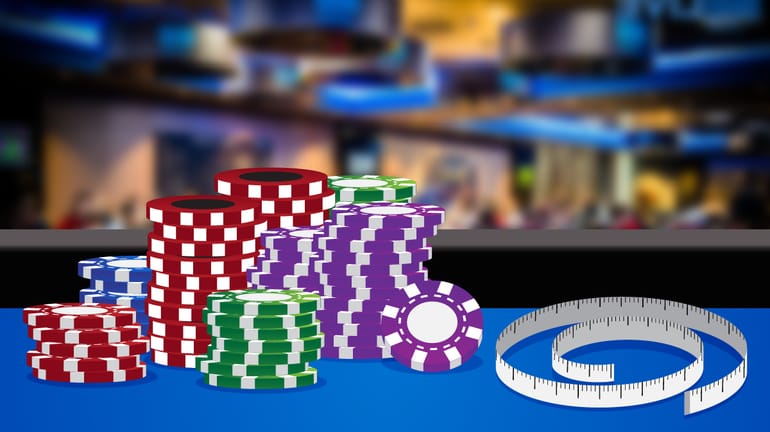How To Beat Online Poker Cash Games
Poker at the micro stakes is where most of us start our cash game journey. It is important to start creating good habits now that will carry over once you move on to higher stakes. While the micros can be beaten without too much effort, there are a few pitfalls that you need to look out for if you want to maximize your chance of success at the lowest stakes.
The purpose of this article is to give beginners and intermediate players the top 10 keys to beating the micro-stakes. Each item on my list has been gleaned from personal experience having played millions of hands at 25NL and below. My hope is that I give you the best chance possible of crushing the games and gaining invaluable experience that will serve you well as you move up through the micros and beyond.
In no-limit Hold'em, you can lose your entire stack in a single hand, so stick with stakes. Many pros will play between 16 and 24 online poker games simultaneously - whether they're cash games, Sit 'n' Gos, or tournaments - as this allows for faster play, more volume and a higher ROI. Poker remains one of the most popular card games in the world. Its origins can be traced back to the 16th century. More recently, online poker for real money has become a very popular gambling.
1. Avoid Complicated Spots
When playing for nickels and dimes online at the micro stakes, it’s not the time to try and impress your poker buddies with fancy plays made in marginal spots. This is a recipe for slower than necessary progress when trying to beat a bunch of beginners and recreational players. There will be plenty of opportunities to push small edges after you move up to mid-stakes, and beyond, where the games are tougher and easy money is much harder to find.
Instead, at the micro-stakes, you should be looking to make your money by overwhelming your opponents with a precise following of the fundamentals. By avoiding complicated spots, you can be assured that you are making money from the collective mistakes of the other players. Just grind out an exploitative ABC game by playing lots of pots in position and profit will flow into your bankroll. As a rule, relentlessly value bet your big hands and don’t overplay your marginal ones.
2. Play Exploitative Poker
One of the concepts that you must master to win at poker is to understand that poker is a people game. At the micro-stakes, there is a large variety of player types that can be exploited in one way or another. Learning to profile your opponents and label them is a key skill to learn and will allow you to make quick and targeted adjustments while you play.

Beyond your core strategy, forget about game theory optimal play. Save that kind of thinking for when you are playing high stakes. When the vast majority of your opponents are playing sub-optimally, you instead want to take advantage of those leaks in order to maximize profit. While “GTO” play would certainly win versus bad players, it simply isn’t going to let you maximize your win-rate.
3. Don’t Battle Micro-Stakes Regs
I recommend that you learn a bit about the various levels of thinking, but don’t get too caught up in trying to battle the best players at each stake. Instead, as a rule, avoid complicated spots against them and just look for their leaks the same way you do against the fish. In general, you want to make sure you play on your terms when involved in a hand with them. In other words, always play to your strengths and make the regs be at a disadvantage when involved in a hand with you.
I know, I know…. easier said than done, right? Even so, the fact that you are even thinking about such things right now gives you an inherent advantage. The best place to start is with good note-taking. Beyond that, just focus on your decision-making process and you will be fine.
Best Online Poker Cash Games

4. Bet The Strength Of Your Hand
Once you are playing small stakes, 50NL to 100NL, there will be a need to start considering balance as part of your overall strategy. There will be regulars who will hone in on any weaknesses in your game and exploit you relentlessly. However, for the most part, you don’t have to worry about getting exploited at the micro-stakes. Even the “better” players at the table will mostly be playing a level one strategy that is based mostly on their own cards.
In general, you can get away with just making big bets with big hands and small bets with marginal hands. It really doesn’t take an acute understanding of post-flop equity to beat your typical micro-stakes table. Most of your opponents won’t be paying much attention to what anyone else is doing and, even if they are, won’t often know how to use that information effectively.
5. Follow Charts While You Learn
All top players know exactly what they will do in 99% of the situations they face. They then adjust their lines based on the table dynamic and game flow considerations. You need to get to the point where most of the game becomes automatic for you. It really helps you have a core strategy to fall back on.
While you are learning, you will often become lost and have no clue what to do. As a temporary learning tool, it’s a good idea to make a chart that includes all of your “vacuum” ranges and lines that you use when you are completely readless. It’s not as hard as you think, here is a downloadable template (shown below) for you to fill in the blanks. Also, if you want to know how it works, I created a free basic strategy that uses similar charts which will give you a good starting point.
Pre-Flop and Post-Flop Charts Template
6. Set a Bankroll Management Plan and Stick to It
This might be the most important tip of all since it’s hard to play poker without any money. Beginners will have goals that are much different than experienced players who are just trying to rebuild a bankroll fast. However, no matter your level, if you don’t follow good bankroll management principles you are in for a lot of frustration. I recommend that you have at least 30 buy-ins for a cash game stake and 100 buy-ins for tournaments.
It will be really tempting to try to chase losses if you happen to run bad for an extended period of time, especially if you are playing for what may seem like “insignificant” amounts of money. Even so, at the micros, you are going to be building habits that will last for your entire poker career. If you tempt fate with your risk of ruin now, you will probably do so later on when you are playing pots that are hundreds or thousands of dollars.
7. More Volume, Less Study at the Micro-Stakes
Once you have a basic understanding of poker strategy, I recommend practicing what you have learned for thousands of hands before shifting your focus back to learning. Besides, just knowing the fundamentals and having a rudimentary understanding of how commitment works should allow you to beat up through 25NL on most poker sites. This will give you time to develop some personality in your game and force you to solve situations that will seem very complicated at first.
You will make mistakes along the way, no doubt. Therefore, the only type of study that I recommend at the micros is that you take notes or keep a journal as you play. Write down anything that you are unclear on and save hand histories where you had major problems or were completely lost. Post those questions on one of the major poker forums and get into discussions on how to navigate those situations for a couple of hours each week. Don’t substitute playing time to post, only do it outside of your playing schedule.
Other than that, I advocate that you wait until you get to 50NL before you start putting in more significant study time. At that point, you will probably want to play and study at a 50/50 ratio or and maybe even get some coaching. But for now, your goal for the 25NL and below should be to get out of 25NL and below.
8. No Slow Playing at the Micros
This is one of the things that I see all of the time in my students, and it drives me crazy. They are involved in a pot with your typical micro-stakes calling station and flop a huge hand. Instead of betting and/or raising, they check and call, hoping that their opponent will “catch up” a bit and commit to the pot on the turn or river. While this will definitely work in winning pots, it is also a great way to ensure that you win the least amount possible.
No matter what stake you play, one of the biggest sins is to not get enough value with the top of your range when playing in a loose poker dynamic. As a rule, you should always err on the side of betting on the larger side when unsure how to proceed. Unless you have a really good reason, throw out the call button when you flop a strong hand. Bet or raise relentlessly until the money is all-in. Your win-rate will thank you.
9. Do Not Play Tight, Small Ball For The Win
One of the things that most people teach beginners or intermediate players is that “tight is right” and that you should just play very few hands and let weak players make mistakes against your strong range. While this does make the game easier initially and might even work, the advice is actually pretty horrible. Eventually, if you want to compete at mid-stakes or high stakes, you will have to loosen up and learn to play a lot of hands.
The micro-stakes is actually a great place to start developing a loose-aggressive (LAG) strategy. You are playing for less money, so now is the time to get creative and face as many spots as the fundamentals will reasonably allow for. It’s much better to learn when the cost is cheap rather than when the pots are huge, relatively speaking.
Why play as a LAG? The idea is to see a lot of pots against weaker players, in position. Also, when involved in games that see lots of multi-way pots, you want to learn to play hands that can make the nuts (with the right price) and get as much value as possible when you connect. In my opinion, if your VPIP at the micro-stakes is not at least 25% for 6-max or 18% for full ring, you are playing too tight. Below is a screenshot of my positional stats back when I built my cash game bankroll in 2011.
I ran 33/30 against tables of bad regulars and fish. I learned A LOT by playing this many hands.
10. Stick to the Fundamentals
I’ve mentioned this one briefly before but the importance of sticking to the fundamentals against players with bad fundamentals cannot be overstated. Strive to play as many hands as you can with position and initiative. This will allow you to keep constant pressure on opponents who are generally really bad at dealing with pressure
How To Beat Video Poker
The way to do this is to get good at playing the cutoff through the blinds by having a reasonably strong blind stealing and blind defense strategy. Since most micro-stakes players play badly in the blinds and generally don’t steal or defend enough, there is a lot of profit to be had from recognizing the players who play late position poorly. Your entire pre-flop strategy should be based on setting up profitable post-flop spots for yourself.
After the flop, your main focus should be on optimizing your c-bet frequencies based on your opponents and the board texture. Figure out which players are fit or fold and which ones are calling stations. Once you do that, the only thing left to do is adjust and execute.
Summary

Beating the micro-stakes is easy if you just understand the object of the game, stick to the fundamentals, and play solid aggressive poker. By following the tips in this article, you will be well on your way toward cruising through to 50NL and beyond.
Cash Poker Games Videos

Live Poker Cash Games
If you are looking for information to get you on the right path toward beating the games, I wrote a comprehensive poker tutorial designed to prepare anyone to play winning poker. Thanks for stopping by, and good luck at the tables!